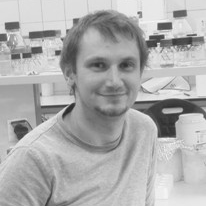Yeast as a Model in Aging Research
A special issue of Cells (ISSN 2073-4409). This special issue belongs to the section "Cellular Aging".
Deadline for manuscript submissions: closed (1 March 2022) | Viewed by 39392
Special Issue Editors
Interests: genetics; epigenetics; nanomaterials; nanomedicine; nanotechnology; nanoparticles; graphene; nanotoxicology
Special Issues, Collections and Topics in MDPI journals
Interests: aging; cell cycle regulation; longevity; yeast biology
Special Issues, Collections and Topics in MDPI journals
Special Issue Information
Dear Colleagues,
Aging is an inevitable, complex and multifactorial process leading to loss of cells, tissues, and organismal functions. Despite years of studies and research efforts, the precise molecular mechanisms and the main determinants of aging are yet to be found. Use of simple models is fundamental in basic research because molecular mechanisms that regulate most cellular processes are highly conserved between mammals and simple eukaryotes. Yeast as a model organism has been used as a workhorse in many areas of science, including aging. In yeast, as in other models, there are private and public factors that determine aging. Therefore, for this issue, we invite manuscripts focused on the intricate mechanisms of aging based on the yeast model. This Special Issue under the broad theme of Yeast as a model for aging research intends to explore and reveal the latest significant advances towards identifying unknown molecular mechanisms that determine cellular aging, longevity and cell death. Studies based on yeast model organisms, such as Saccharomyces cerevisiae, and nonconventional yeasts are welcome. Focused review articles as well as original research papers are sought contributions.
Assoc. Prof. Milena Georgieva
Dr. Mateusz Mołoń
Guest Editors
Manuscript Submission Information
Manuscripts should be submitted online at www.mdpi.com by registering and logging in to this website. Once you are registered, click here to go to the submission form. Manuscripts can be submitted until the deadline. All submissions that pass pre-check are peer-reviewed. Accepted papers will be published continuously in the journal (as soon as accepted) and will be listed together on the special issue website. Research articles, review articles as well as short communications are invited. For planned papers, a title and short abstract (about 100 words) can be sent to the Editorial Office for announcement on this website.
Submitted manuscripts should not have been published previously, nor be under consideration for publication elsewhere (except conference proceedings papers). All manuscripts are thoroughly refereed through a single-blind peer-review process. A guide for authors and other relevant information for submission of manuscripts is available on the Instructions for Authors page. Cells is an international peer-reviewed open access semimonthly journal published by MDPI.
Please visit the Instructions for Authors page before submitting a manuscript. The Article Processing Charge (APC) for publication in this open access journal is 2700 CHF (Swiss Francs). Submitted papers should be well formatted and use good English. Authors may use MDPI's English editing service prior to publication or during author revisions.
Keywords
- aging
- antioxidants
- apoptosis
- cell death
- lifespan
- longevity
- chromatin
- genome instability
- yeast
- oxidative stress
- DNA damage
Benefits of Publishing in a Special Issue
- Ease of navigation: Grouping papers by topic helps scholars navigate broad scope journals more efficiently.
- Greater discoverability: Special Issues support the reach and impact of scientific research. Articles in Special Issues are more discoverable and cited more frequently.
- Expansion of research network: Special Issues facilitate connections among authors, fostering scientific collaborations.
- External promotion: Articles in Special Issues are often promoted through the journal's social media, increasing their visibility.
- e-Book format: Special Issues with more than 10 articles can be published as dedicated e-books, ensuring wide and rapid dissemination.
Further information on MDPI's Special Issue polices can be found here.







